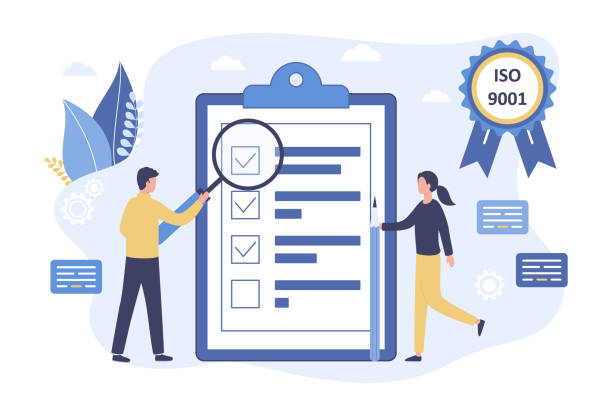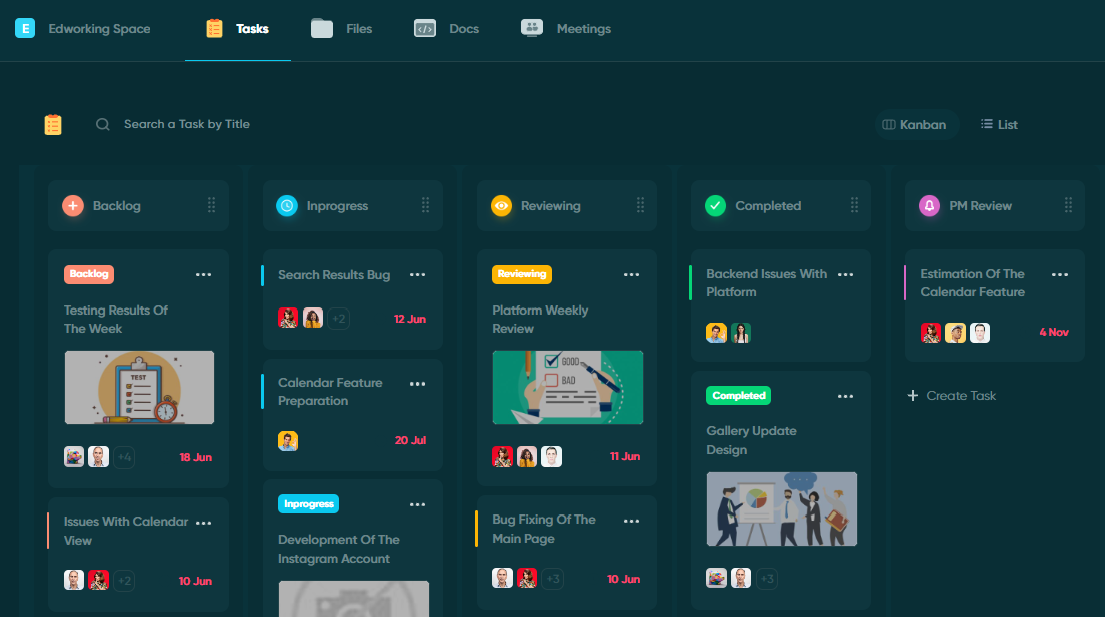Why is project quality management often the unsung hero of successful projects? While flashy timelines, big budgets, and innovative ideas grab attention, it’s the meticulous focus on quality that truly determines whether a project will thrive or falter. Imagine building a house with all the right materials but skipping the inspections—it may look great initially, but cracks will show over time.
Project quality management is the backbone of consistent, reliable, and successful outcomes. It ensures that deliverables not only meet but exceed stakeholder expectations, maintaining integrity and trust throughout the project lifecycle. From setting clear standards to refining processes and ensuring teams stay aligned, quality management is what turns good ideas into great results.
In this article, we’ll dive into the most effective tools and strategies for enhancing project quality management. Whether you’re tackling small-scale projects or managing large, complex initiatives, these insights will help you raise the bar on performance and outcomes.
 Understanding Project Quality Management
Understanding Project Quality Management

What is Project Quality Management?
At its core, project quality management is the process of ensuring that a project’s deliverables meet or exceed the expectations of stakeholders. It’s not just about checking boxes or following rigid rules—it’s about crafting a standard of excellence that resonates throughout the project lifecycle.
Why does it matter? Because quality is what separates a functional product from one that truly impresses. Effective project quality management aligns project outcomes with stakeholder needs, balancing efficiency, cost, and performance. Without it, even the most well-funded and innovative projects can crumble under the weight of unmet expectations.
Picture this: You’re a chef preparing a dish for a high-stakes competition. The ingredients are top-notch, the recipe is flawless, but you forget to taste and adjust along the way. The result? A meal that falls short of its potential. Project quality management ensures you’re "tasting and adjusting" at every step, so the final product is nothing short of outstanding.
Core Components of Project Quality Management
Project quality management is built on three foundational pillars: Quality Planning, Quality Assurance, and Quality Control. Together, they form a cycle of continuous improvement that ensures every deliverable meets its intended standard.
1. Quality Planning: Setting Quality Benchmarks
Quality begins with a plan. During this phase, project managers define the standards and benchmarks that will guide the project. These include:
- Identifying stakeholder expectations: What do clients, end-users, or teams need?
- Setting measurable goals: Define clear, actionable criteria for success.
- Developing a quality management plan: Documenting processes, tools, and resources needed to maintain quality.
Think of it as setting the GPS coordinates before starting a road trip—you can’t arrive at the right destination without knowing where you’re headed.
2. Quality Assurance: Ensuring Processes Meet Established Standards
Once the plan is in place, quality assurance (QA) ensures that processes are designed and executed to meet the predefined standards. This involves:
- Proactive monitoring: Identifying potential issues before they occur.
- Standardized procedures: Implementing consistent workflows to minimize variability.
- Training and support: Equipping teams with the tools and knowledge to maintain quality.
QA acts as the safety net of your project, catching flaws in the process before they manifest as larger issues in the deliverables.

3. Quality Control: Identifying and Addressing Deviations
While QA focuses on processes, quality control (QC) zeroes in on the outcomes. It’s the practice of examining the final deliverables to ensure they meet the set quality benchmarks. Key aspects include:
- Inspection and testing: Regularly reviewing deliverables for defects or inconsistencies.
- Feedback loops: Gathering input from stakeholders and end-users to identify areas for improvement.
- Corrective actions: Addressing deviations promptly to prevent them from impacting the project.
Think of QC as the final taste test before serving a dish—making sure everything is just right before it reaches the table.
 Key Strategies to Enhance Project Quality Management
Key Strategies to Enhance Project Quality Management
1. Emphasizing Clear Communication
Have you ever played a game of "telephone" where the original message gets completely distorted by the end? That’s exactly what happens in projects when communication isn’t clear. Communication breakdowns can lead to missed deadlines, misunderstood requirements, and ultimately, a dip in project quality.
To maintain clarity and alignment, teams must leverage modern communication tools. Platforms like Slack, Microsoft Teams, or Edworking facilitate real-time collaboration, ensuring everyone is on the same page. Features like task-specific channels, file sharing, and instant notifications make it easy to streamline conversations, minimize misunderstandings, and boost productivity.
Clear communication isn’t just a "nice-to-have"—it’s the glue that holds your quality management processes together.
2. Establishing Realistic Goals and Standards
How often do ambitious projects falter because their goals were too lofty or vague? Unrealistic expectations and poorly defined standards are among the biggest enemies of project quality.
This is where SMART goals (Specific, Measurable, Achievable, Relevant, and Time-bound) come into play. Setting SMART goals ensures that objectives are clear, actionable, and attainable. For example:
- Instead of saying, “Improve project quality,” a SMART goal would be, “Increase deliverable quality ratings by 15% within six months.”
In addition to SMART goals, well-defined quality criteria help prevent scope creep and costly rework. By documenting expectations upfront, you provide a clear roadmap for your team to follow, reducing ambiguity and enhancing focus.
3. Continuous Training and Development
The tools and techniques for managing project quality evolve constantly, and so must your team’s skillset. Continuous training and development is essential to keep everyone up to date with the latest industry standards, tools, and methodologies.
Consider platforms like LinkedIn Learning or Coursera, which offer courses tailored to project management and quality assurance. For example:
- A project manager might benefit from training on Agile principles.
- A quality analyst could take courses on Six Sigma or Lean methodologies.
Beyond technical skills, investing in soft skills training—like communication, problem-solving, and teamwork—can also have a profound impact on quality management.
Think of training as sharpening your tools. A well-trained team is better equipped to anticipate challenges, adapt to changes, and deliver high-quality results.

4. Fostering a Culture of Accountability
When everyone on the team feels ownership of their tasks, the quality of work improves naturally. Fostering a culture of accountability means encouraging individuals to take responsibility for their roles and contributions.
How does this translate into practice? Here are some examples:
- Transparent tracking: Use tools like Edworking or Asana to assign clear responsibilities and monitor progress.
- Celebrating achievements: Recognize team members who meet or exceed quality standards to reinforce positive behavior.
- Encouraging feedback: Create a safe space for team members to share ideas and flag issues without fear of blame.
Accountability doesn’t just improve performance—it builds trust and collaboration within the team. When people know their work matters, they’re more likely to go the extra mile to maintain quality.
By implementing these strategies—clear communication, SMART goals, continuous training, and accountability—you create a solid foundation for enhancing project quality management. These steps not only improve deliverables but also foster a more cohesive and motivated team.
 Effective Tools for Project Quality Management
Effective Tools for Project Quality Management
The right tools can make all the difference in enhancing project quality management. They not only streamline processes but also reduce errors, improve collaboration, and ensure consistency. Let’s explore some of the most effective tools in this space.
1. Project Management Software
Imagine trying to organize a complex project using email threads and sticky notes—it’s a recipe for chaos. Project management software like Trello, Asana, and Monday.com simplifies task tracking, resource allocation, and team collaboration.
Comparison of Tools
- Trello: Ideal for smaller projects with its intuitive, Kanban-style boards. Great for visualizing workflows but limited in advanced features.
- Asana: Offers robust features like custom workflows and timeline views, making it suitable for medium to large projects.
- Monday.com: Combines task management with customizable dashboards, providing a bird’s-eye view of progress and performance metrics.
The main difference between these tools lies in their scalability and feature sets. While Trello excels in simplicity, Asana and Monday.com cater to teams needing more advanced functionalities like integrations and analytics.
2. Workflow Automation
Why waste time on repetitive tasks when tools can handle them for you? Workflow automation tools like Zapier and Jira can save hours while ensuring precision and consistency.
How Automation Helps
- Zapier: Connects apps and automates tasks, like sending notifications or updating spreadsheets, without writing code.
- Jira: Designed for software development teams, Jira automates issue tracking, sprint planning, and bug reporting.
Automation reduces human error, one of the leading causes of quality issues. For example, automating routine tasks like data entry or status updates ensures that no critical details are overlooked, allowing teams to focus on strategic work.
3. Quality Control and Assurance Tools
Ensuring quality isn’t just about fixing errors—it’s about preventing them. Tools like Kissflow and Process Street are designed to help teams monitor and improve quality at every stage of a project.
Benefits of Standardizing Processes
- Kissflow: Provides end-to-end process automation, allowing teams to identify and address bottlenecks early.
- Process Street: Simplifies the creation of checklists and standard operating procedures (SOPs), ensuring consistency across tasks.
Standardized processes not only enhance quality but also reduce variability, making it easier to replicate successful outcomes in future projects.
4. Real-Time Feedback and Reporting Tools
Feedback is most effective when it’s timely. Real-time feedback and reporting tools like Tableau and Google Data Studio provide actionable insights, enabling teams to refine processes as the project progresses.
How Insights Improve Outcomes
- Tableau: Offers advanced data visualization capabilities, making it easy to spot trends and patterns.
- Google Data Studio: Integrates seamlessly with other Google tools, providing user-friendly dashboards and reports.
With real-time reporting, teams can quickly identify deviations from quality standards and take corrective actions. For instance, a dip in task completion rates can be addressed immediately by reallocating resources or adjusting workflows.
These tools—whether for project management, automation, quality monitoring, or real-time reporting—are essential for enhancing project quality management. By leveraging their capabilities, teams can not only achieve their goals but also deliver outcomes that exceed expectations.
 Proven Techniques for Maintaining High Standards
Proven Techniques for Maintaining High Standards
Maintaining high standards in projects requires more than just good intentions—it demands proactive techniques that ensure consistent quality. Here are some proven strategies to help you achieve this goal.

1. Implementing Regular Audits
Think of regular audits as your project’s health checkups. They help identify weak spots in processes and allow teams to address issues before they escalate. Audits ensure that quality standards are not only met but continuously improved.
How Periodic Reviews Identify Weak Spots
- Audits uncover inefficiencies, bottlenecks, and deviations from established protocols.
- They provide actionable insights for refining workflows and enhancing overall project performance.
A Company That Benefited from Regular Quality Audits
A manufacturing company struggling with product defects implemented monthly quality audits. By systematically reviewing production processes, they identified and corrected a recurring issue in one of their assembly lines. The result? A 30% reduction in defects and an increase in customer satisfaction. This example highlights how regular audits can lead to measurable improvements in quality and efficiency.
2. Utilizing Checklists and Templates
When it comes to repetitive tasks, why reinvent the wheel? Checklists and templates provide a predefined structure that ensures no detail is overlooked.
Advantages of Predefined Structures
- Consistency: Standardized templates reduce variability, ensuring all deliverables meet the same quality benchmarks.
- Efficiency: Checklists save time by providing clear guidance for completing tasks.
- Error reduction: A comprehensive checklist minimizes the risk of missing critical steps.
Examples of Industries Where Checklists Save the Day
- Aviation: Pilots rely on pre-flight checklists to ensure safety and compliance.
- Healthcare: Surgeons use surgical safety checklists to prevent errors during procedures.
- Construction: Project managers use templates for site inspections, ensuring that every aspect of a build meets regulatory standards.
Incorporating checklists and templates into your quality management process can transform repetitive tasks into reliable and efficient workflows.
3. Incorporating Agile and Lean Principles
Agile and Lean principles are game-changers for quality management, offering frameworks that emphasize flexibility, continuous improvement, and value delivery.
Agile’s Iterative Approach to Quality Management
Agile encourages teams to break projects into smaller, manageable iterations, delivering value incrementally. Key benefits include:
- Early issue detection: Frequent testing and feedback in each iteration help identify quality issues sooner.
- Adaptability: Teams can quickly adjust to changes, ensuring that quality standards remain intact even as project requirements evolve.
Lean Methodologies for Minimizing Waste and Maximizing Value
Lean focuses on eliminating waste in processes, whether it’s unnecessary steps, excess materials, or time delays. By streamlining workflows, teams can:
- Reduce costs: Minimize expenses without compromising quality.
- Increase efficiency: Deliver more value in less time.
Practical Application
Imagine a software development team adopting Agile sprints. By conducting daily stand-ups and sprint reviews, they catch coding errors early and continuously improve their processes. Similarly, a Lean manufacturing team might reorganize their workspace to reduce movement and save time, directly impacting productivity and quality.
 How Edworking Supports Project Quality Management
How Edworking Supports Project Quality Management
Edworking offers an all-in-one solution that enhances project quality management through features like task tracking, real-time collaboration, and AI-assisted tools. These tools streamline quality processes by providing actionable insights, automating repetitive tasks, and ensuring that team members stay aligned with project goals.
Edworking’s AI Creative and Productivity Tools are especially useful for boosting efficiency and maintaining quality standards. These include:
- AI Writing Tools for generating blog titles, paraphrasing, and crafting SEO-optimized content.
- AI Image Tools for creating custom visuals like stock photos, 3D models, and concept art.
- Social Media Tools like the Instagram Caption Generator and Hashtag Generator to automate and enhance engagement strategies.
- Tools like the AI Hook Generator and YouTube Description Generator for creating compelling, targeted content.
By integrating these functionalities directly into its platform, Edworking simplifies team collaboration, improves workflow management, and supports a broad spectrum of professional activities. These AI tools not only boost productivity but also empower teams to deliver higher-quality results with less effort.

 Challenges in Project Quality Management
Challenges in Project Quality Management
Navigating the complexities of project quality management often involves overcoming significant hurdles. Let's delve into three primary challenges and explore practical solutions to address them.
1. Resistance to Change
Why Teams Resist New Processes
Change can be unsettling. Teams may resist new processes due to:
- Comfort with the Status Quo: Familiar routines feel safe and predictable.
- Fear of the Unknown: Uncertainty about new methods can lead to anxiety.
- Perceived Threats to Competence: Concerns about adapting to new skills or technologies.
This resistance is not merely psychological but also physiological, as the brain tends to revert to familiar patterns when faced with new ways of doing things.
Practical Solutions to Encourage Adoption
- Effective Communication: Clearly articulate the reasons for change and its benefits to the team.
- Involvement in the Change Process: Engage team members in planning and decision-making to foster ownership.
- Comprehensive Training: Provide resources and support to build confidence in new processes.
- Addressing Concerns: Create forums for open discussion to alleviate fears and misconceptions.
By anticipating resistance and planning for it, organizations can implement strategies to manage and mitigate it effectively.
2. Balancing Quality and Budget
Strategies to Achieve Quality Without Overshooting Costs
- Prioritize Requirements: Focus on delivering features that provide the most value to stakeholders.
- Implement Incremental Improvements: Adopt methodologies like Agile to make continuous, manageable enhancements.
- Leverage Cost-Effective Tools: Utilize affordable or open-source project management and quality assurance tools to maintain standards without excessive expenditure.
Utilizing advanced project management tools and clear communication can minimize delays and keep projects on track, thereby balancing budget and quality effectively.
3. Time Constraints
Techniques for Maintaining Quality Within Tight Deadlines
- Effective Time Management: Develop detailed schedules that allocate sufficient time for quality assurance activities.
- Resource Allocation: Ensure that the team has access to necessary resources to perform tasks efficiently.
- Regular Monitoring: Keep track of progress and make adjustments as needed to stay on schedule.
Tips on Prioritizing Critical Aspects of Quality Under Pressure
- Identify Critical Quality Factors: Determine which quality aspects are non-negotiable and focus efforts there.
- Streamline Processes: Eliminate unnecessary steps that do not add value to the final product.
- Empower Teams: Delegate decision-making to team members to expedite problem-solving and maintain momentum.
Balancing time, quality, and budget is paramount. Project managers must prioritize tasks and resources based on the project's critical path and desired quality standards.
 Conclusion
Conclusion
Effective project quality management is the cornerstone of delivering exceptional results. It ensures that projects not only meet but exceed stakeholder expectations by aligning goals, maintaining high standards, and fostering collaboration. From setting clear benchmarks and embracing innovative tools to overcoming challenges like resistance to change, balancing budgets, and tight deadlines, quality management paves the way for success.
The tools and strategies discussed—like leveraging communication platforms, implementing SMART goals, fostering accountability, and integrating automation—are practical, actionable steps any team can adopt. They don’t just enhance deliverables; they build stronger, more motivated teams and streamlined processes.
So, what’s stopping you? Are you ready to take your project quality to the next level?
 FAQs
FAQs
What is project quality management, and why is it important?
Project quality management ensures that deliverables meet stakeholder expectations by maintaining standards throughout the project lifecycle. It is essential because it minimizes errors, enhances customer satisfaction, and ensures that projects achieve their intended goals efficiently.
What are the key components of project quality management?
The three main components are Quality Planning, where benchmarks and standards are set; Quality Assurance, which ensures processes align with standards; and Quality Control, which focuses on identifying and addressing deviations in the final deliverables.
How can communication impact project quality?
Clear and effective communication ensures that team members understand project goals, quality standards, and tasks. Tools like Edworking, Slack, or Microsoft Teams facilitate real-time collaboration, preventing misunderstandings that could compromise quality.
What tools are best for improving project quality management?
Popular tools include Trello and Asana for task management, Zapier for workflow automation, and Edworking for AI-enhanced collaboration. These tools streamline processes and maintain high-quality standards.
How can I handle resistance to change in quality management processes?
To overcome resistance, involve team members in decision-making, provide training, and communicate the benefits of new processes clearly. Addressing concerns and fostering a collaborative environment helps smooth the transition.
What strategies can I use to balance quality and budget?
Focus on prioritizing critical deliverables, implementing incremental improvements, and using cost-effective tools like free project management software. These strategies ensure quality without overspending.
What are some common challenges in maintaining quality under tight deadlines?
Time constraints can lead to rushed work and compromised quality. To address this, prioritize critical tasks, streamline workflows, and empower teams with decision-making responsibilities to maintain efficiency without sacrificing standards.
How does Edworking enhance project quality management?
Edworking integrates task tracking, real-time collaboration, and AI tools to automate workflows and provide actionable insights. These features simplify processes and support teams in delivering high-quality results consistently.
Can Agile principles improve project quality management?
Yes, Agile’s iterative approach ensures continuous feedback and testing, allowing teams to identify and resolve quality issues early. This methodology supports adaptability and aligns project deliverables with evolving stakeholder expectations.
What is the difference between quality assurance and quality control?
Quality assurance focuses on processes and ensuring they meet standards, while quality control examines the final deliverables to identify and address any deviations from those standards. Together, they ensure high-quality outcomes.













